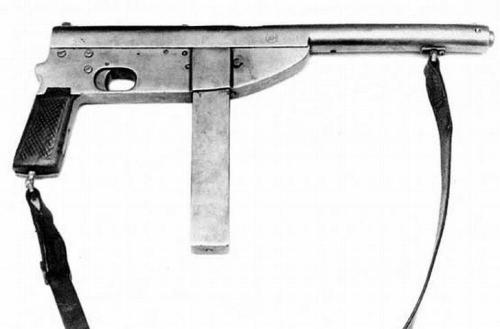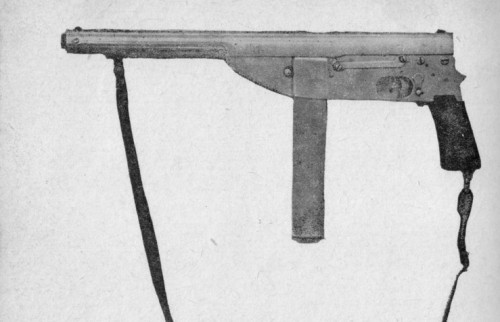The Bechowiec Submachine Gun,During World War II Poland suffered terribly under German occupation.
The Bechowiec Submachine Gun,During World War II Poland suffered terribly under German occupation. As a result the Polish Resistance was one of the largest partisan groups in Europe during the war. Unfortunately the Polish had difficulties obtaining weapons, as they were too far away from the Western Allies and the Soviet Union to receive regular arms shipments. As a result the Polish often had to produce their own weapons. The most common weapon produced was the British Sten as it was simple, required few resources to produce, and were easy to build. However, the Polish also built a number of ingenius indigenous designs as well. When the Germans occupied Poland in 1939, a Polish blacksmith named Henryk Strąpoć from the village of Czerwona Góra decided he would use his skills to help in the war effort, In 1943 he designed and built a working submachine gun from various things lying around that he thought would be useful. The submachine gun he designed looked crude compared to mass produced weapons used by professional armies, yet it was reliable, effective, and deadly.The weapon Strapoc created was incredibly brilliant for a homemade insurgency weapon. Unlike many homemade SMG’s it could fire both semi-automatic or fully automatic, and also had a safety setting. Built mostly of stamped metal, the Bechowiec used a blowback operated hammerfired closed bolt. The bolt itself operated more like a slide on an automatic pistol. While this design was novel, something that wasn’t repeated until HK developed the MP5 decades later, out of ignorance Strapoc didn’t see anything special about his creation. He had little knowledge of how submachine guns worked, to him that must have been how it was done. Just as incredible as his design was the way they were produced. The design specs were given to a team of metalworkers at a local metalworks. At the time the metalworks was occupied by the Germans to produce goods for the German war effort. Under the Germans noses, the workers produced parts for the Bechowiec SMG, then smuggled them out a piece at a time. Strapoc took the responsibility of assembling the guns and finishing them, where they were then donated to the local resistance group. Altogether, between late 1943 and July of 1944 thirteen Bechowiec SMG’s were built. Another 20 were produced but never assembled as German Army units occupied the area to fight the oncoming Soviets. The first 9 were produced in 9mm Para, which was commonly used by the Germans. The last 4 were produced in 7.62 Tokarev, a caliber commonly used by the Soviets.Today only one Strapoc built Bechowiec SMG is known to exist. It is currently on display at the Museum of the Polish Army. -- source link
Tumblr Blog : peashooter85.tumblr.com
#guns#firearms#history#submachine guns#poland#wwii#german occupation#polish resistence#weapons

